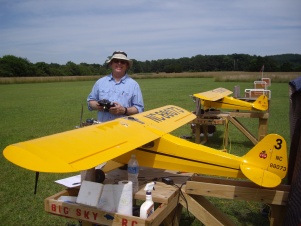Georgia Tech researchers give robots ability to think amongst themselves
This week, at Robotics Rodeo 2010 at Fort Benning, Georgia, researchers from the Georgia Tech Research Institute (GTRI) will be showing off a system they have developed to let airborne and ground-based robots communicate and interact with one another without the need for a human intermediary.
The system is called CUSTD, which stands for Collaborative Unmanned Systems Technology Demonstrator, and it teams two model aircraft with nine-foot wingspans, with an unmanned Porsche Cayenne SUV. Utilizing a complex system of sensors, cameras, and computers, the two aircraft can, for example, search for a target and mark its position with GPS coordinates which are sent back to the unmanned car, which can then navigate to the target using the shortest accessible route.
"It's hard to illustrate the effectiveness of collaborative interoperability and autonomy algorithms in a simulation," Charles Pippin, a GTRI scientist who led the research team said. "When onlookers see the technology demonstrated on hardware platforms, then it becomes very real."
"We believe our system represents the leading edge of demonstrating collaborative autonomous vehicle capabilities," Lora Weiss, research engineer on GTRI's Unmanned and Autonomous Systems team said in a statement today. "This system demonstrates not only the collaborative interoperability possible among dissimilar vehicles, but also the numerous sensing technologies that can be included onboard as interchangeable payloads -- chemical and infrared sensors, still and video cameras, and sophisticated signal- and data-processing."

The system's navigation comes from a Windows-based mapping application that GTRI developed for the Department of Defense called FalconView, and the system's design complies with the standard Interface of the Unmanned Control System for NATO UAV interoperability (STANAG 4586) and with the Joint Architecture for Unmanned Systems (JAUS) scripting language.
